This Backyard Transformation Is Insane
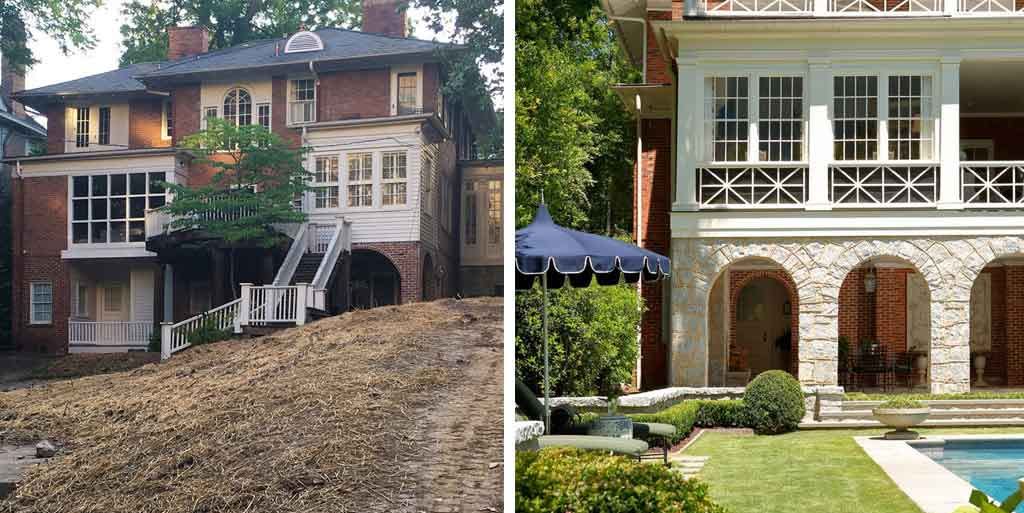
It's no secret that designers have a gift for envisioning what could be. And, indeed, it would take a special kind of forward thinking to look at this drab plot of land in downtown Atlanta and dream up an outdoor oasis befitting a European manor house. But, that's precisely how Don Easterling's dreamy backyard came to be–with the help of his partner, Nina Nash Long, and Atlanta architect Brandon Ingram.
"This project had pretty much been in the works for 15 years," says Long. Essentially, Easterling had been carefully considering what he'd do to the space since buying the house—and Long, who spends tons of time there ("We're really like family," she says.), had too.
When Easterling first bought the property, the yard contained an old garage and some neglected land—a far cry from the lounging and entertaining space they envisioned. The 1911 home, designed by Atlanta architect Neel Reid was once a frequent stop for JFK on trips to Atlanta, and, after years of restoring the interior to its former glory, Easterling wanted to tackle the exterior.
"Atypical of Reid's work, the rear facade and back yard were always underdeveloped," recalls Ingram. "Our goal was to improve the interior function, while invigorating the home's rear presence by removing a series of poorly done additions from the 1940s through the 1980s."
And invigorate they did—earlier this year, the project won the Institute of Classical Architecture and Art's prestigious Shutze award. Here's how the trio brought it to life.
Rear Facade
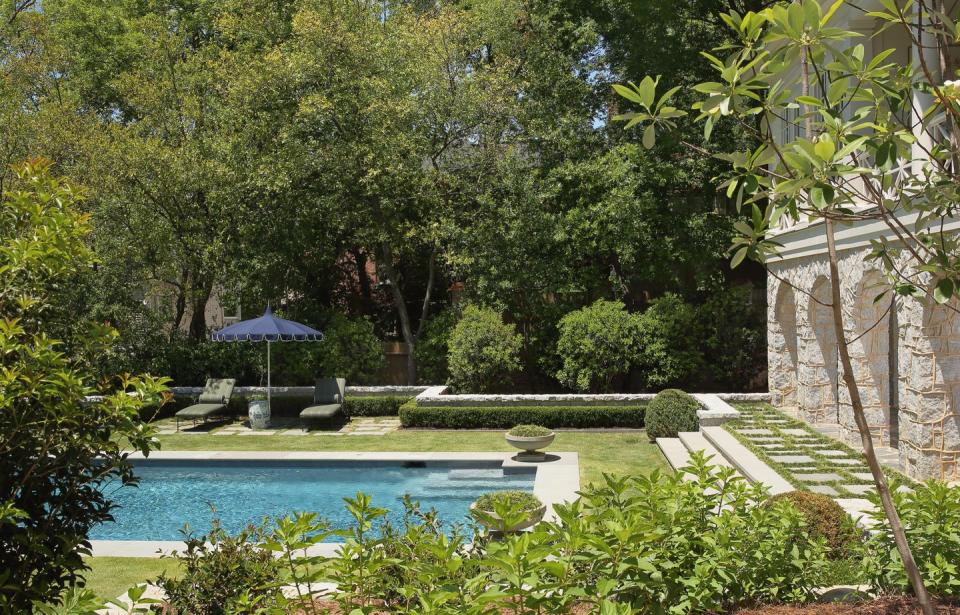
"In Atlanta, you can be outside eight or nine months a year," says Long. So, it was important to Easterling, who loves indoor-outdoor living, to have a space that allowed for easy flow between the two. The new, double-story facade, allows for that—for most of the year, the doors stay open at all times.
"Despite being an outdoor space, the new covered porch is a direct extension of the indoors, creating a logical and intentional complement to the interior living areas of the house," Ingram says. Long and Easterling continued to blur that line by selecting antiques, hardware, and finishes that can be found indoors, too (the thick stonework protects them from the elements).
The new rear porches also provide views of the surrounding downtown area. "There is a striking contrast in the quiet serenity of the newly created backyard spaces and the modern skyline of Midtown Atlanta," says Ingram.
"It's such a crazy juxtaposition," agrees Long. "Because you have all these modern buildings downtown, and then this."
Pool
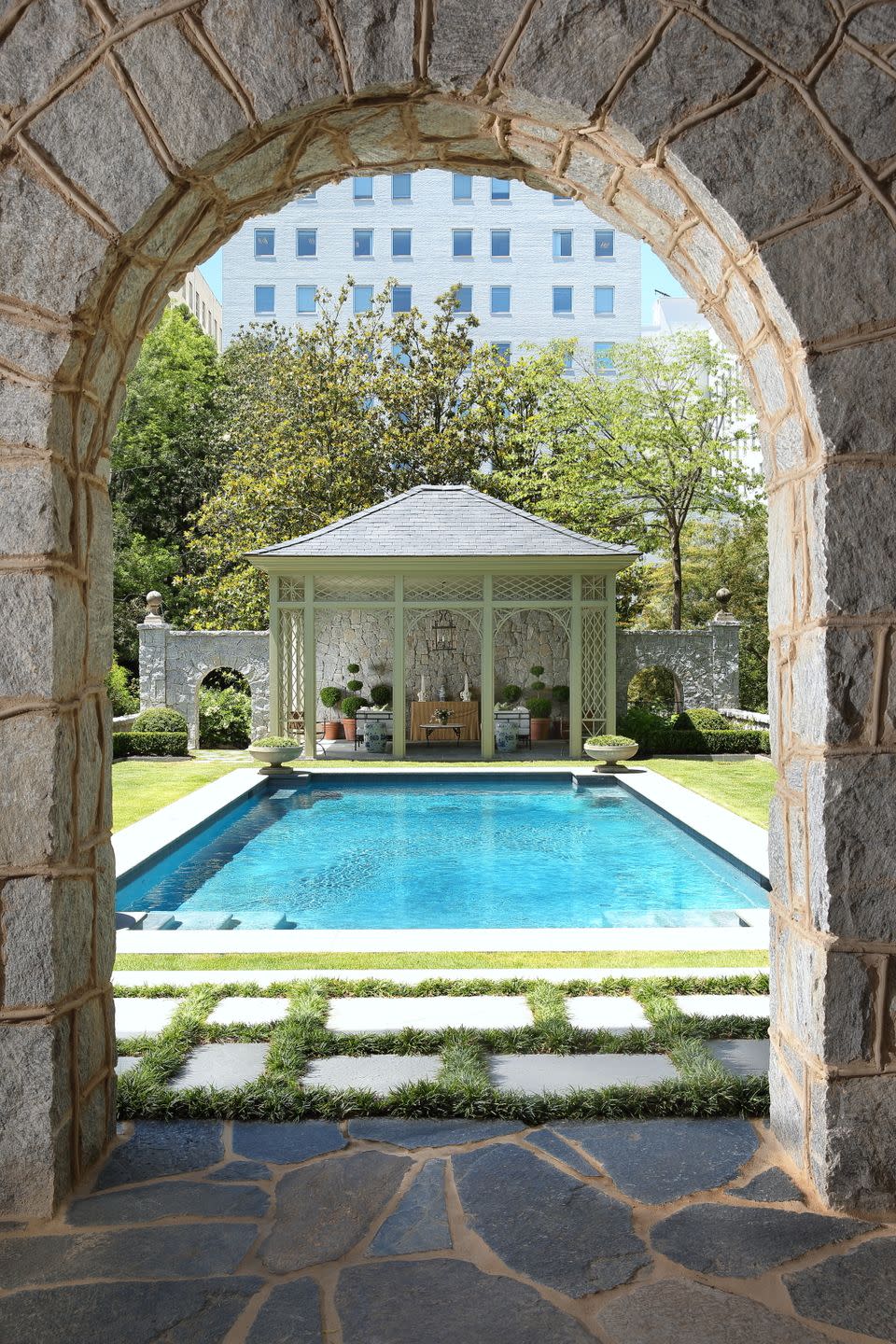
Indeed, the space is decidedly classical in its layout and details—though, as a testament to those classical foundations, it still serves a modern lifestyle. "We introduced a series of arches, columns, and railings that drape the back with a veritable architectural curtain, never hiding what Reid created, but filtering it through a more classic lens," explains Ingram. "We used the pool as an architectural device to link the rear of the house with the new pavilion, and to reinforce their axial relationship."
Pavilion
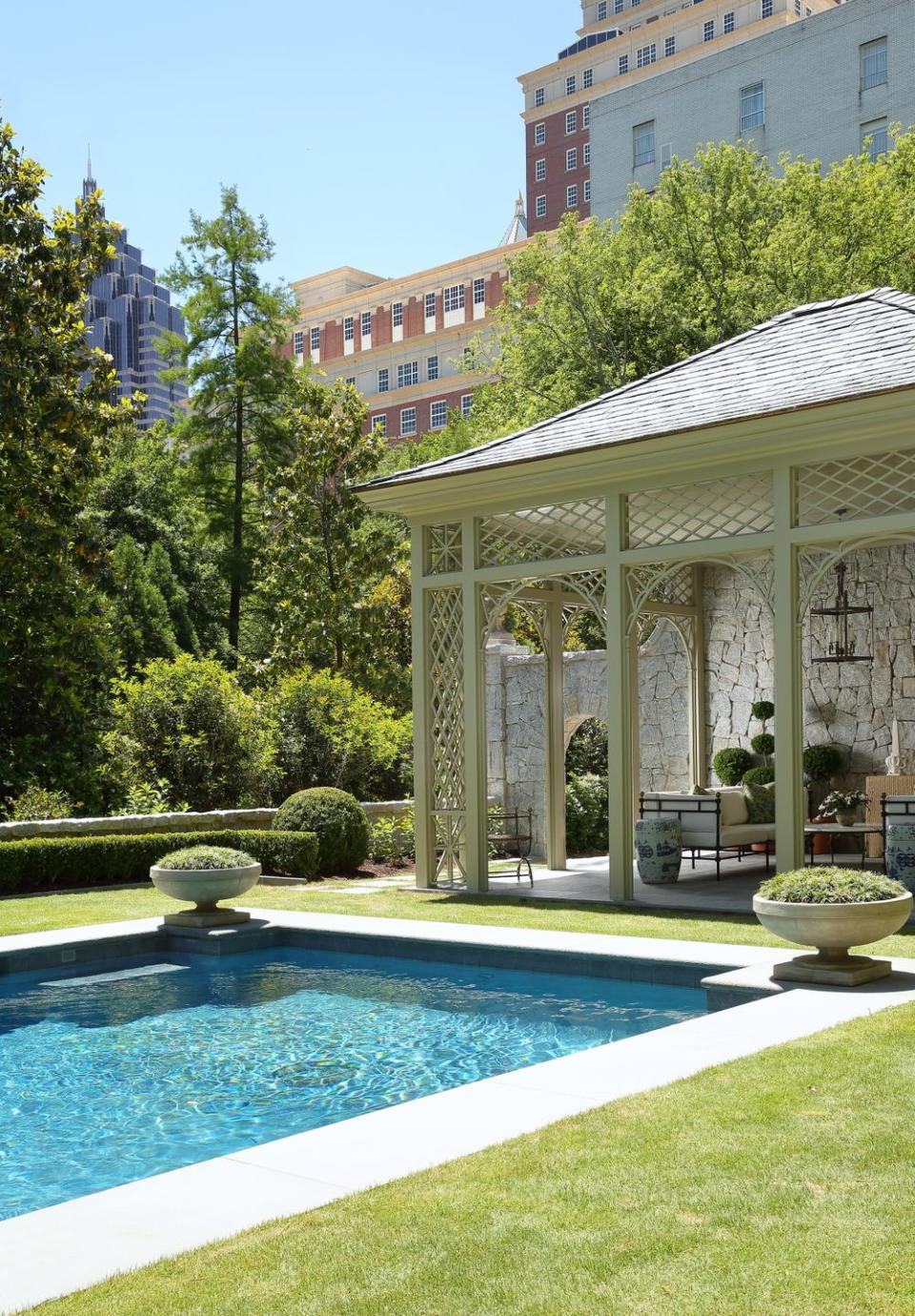
"Don was always drawn to a structure at the end of a pool, architecturally," explains Long. "More so than a typical poolhouse, this is almost an ornament, part of the landscape."
Plus, she explains "we thought a full poolhouse would kind of be a waste of money," when you can get the same amount of space and function from the open-air option, which has a lighter feel. When covered in treillage (painted in Nantucket Gray by Benjamin More, with the slightest hint of green), the structure takes on an extra element of ornamentation.

Inside, though, it has all the trappings of a poolhouse, set against a backdrop of warm, local Georgia granite. "We tried to draw from Reid's palette of preferred materials and details where possible," Ingram explains.
Two outdoor sofas by Brown Jordan (with durable Sunbrella upholstery) are covered in throw pillows by Schuyler Samperton, which add the kind of visual punch that's often overlooked in outdoor spaces. Meanwhile, assorted textures—like on the wicker Hickory Chair console and Niermann Weeks lantern for Visual Comfort—give the space a sense of gravitas.
Yard
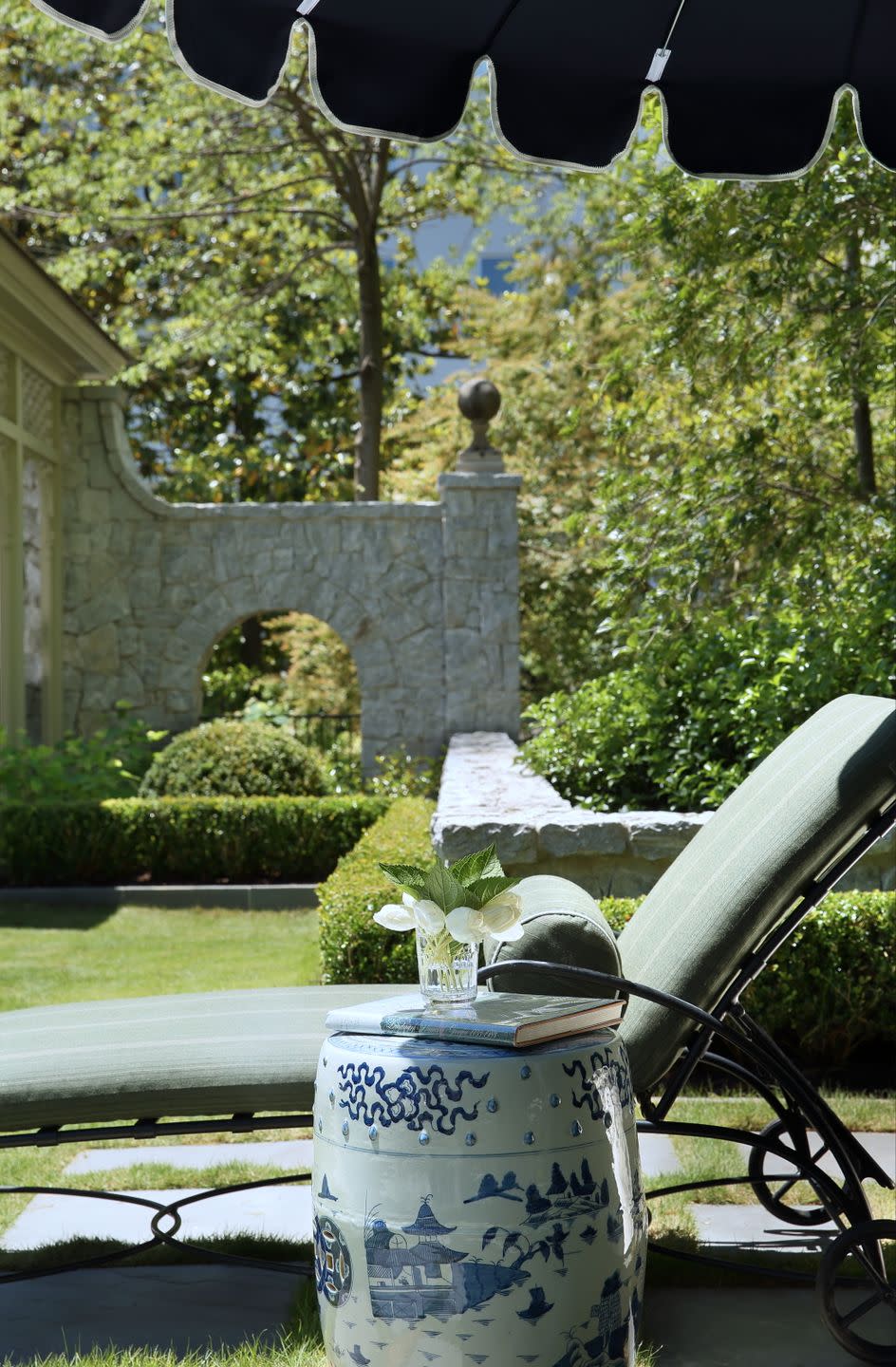
Landscaping by John Howard provides a distinct flow to the space and anchors the various elements to their surroundings. The designers nestled lounge chairs within the landscape for an added sense of discovery. The chaises once belonged to a friend of Easterling's who has since passed away, giving them additional meaning within the design.
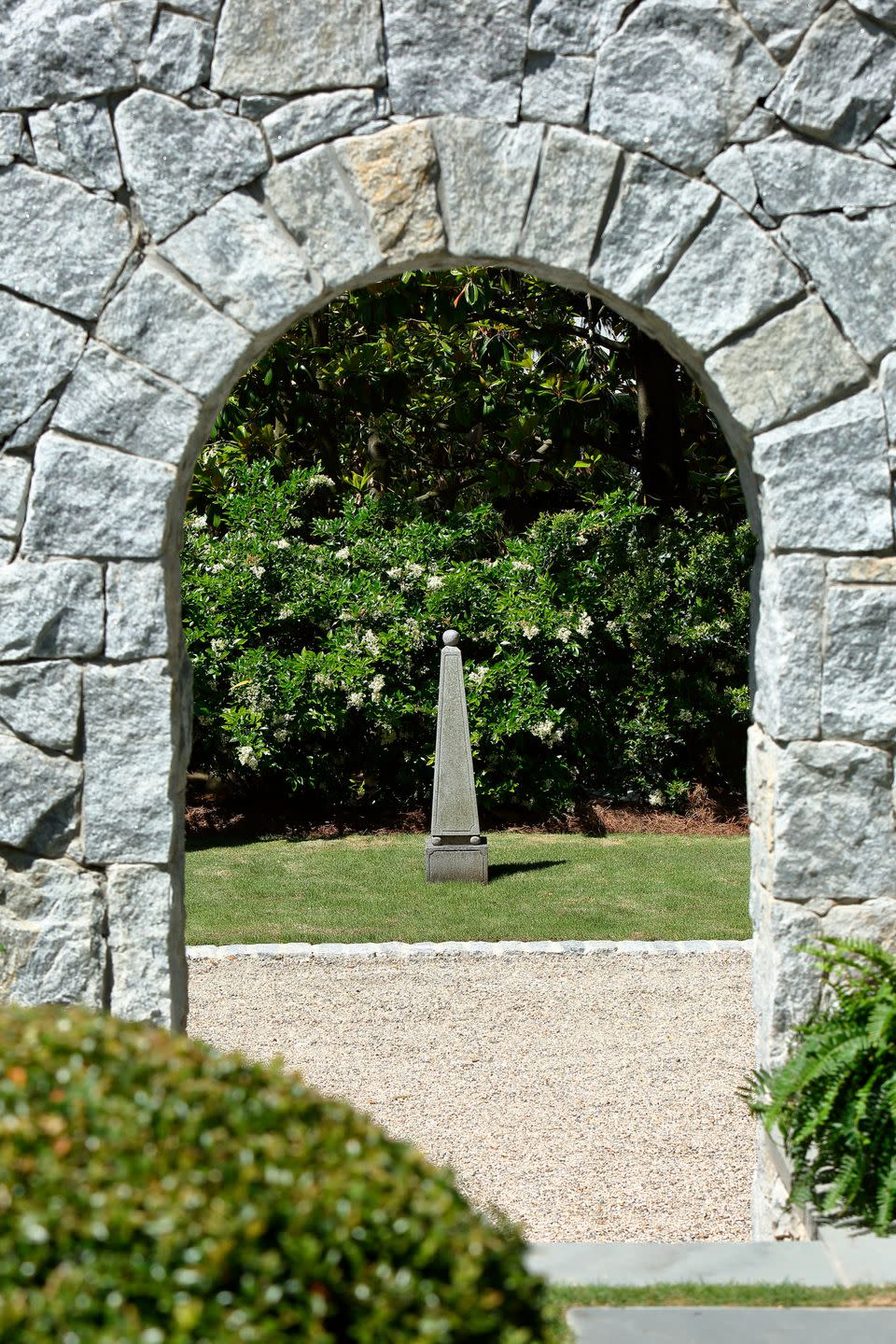
"They're symmetrical, but they don't scream at you," says Long of the cutouts in the hedges where the chaises sit. Indeed, much like the design as a whole, they have a sense of unassuming logic which, in reality, was the result of careful planning.
It's all proof of the benefit of taking your time on something, as Long sees it. "Wait until you can do something right," she says. "If you can't afford it; if the timing's not right, don't rush into it. Give it the time it deserves."
Follow House Beautiful on Instagram.
You Might Also Like


